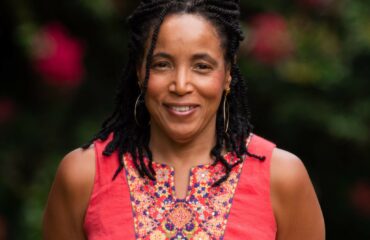Leon County’s slave trade revealed in new documentary “Invisible History” by FSU Film Prof. Valerie Scoon
 Many of us have little knowledge of what lies beneath the foundation of north Florida and what would later become Tallahassee, Florida’s state capitol. FSU Film Professor Valerie Scoon came to this realization after moving near a plantation cemetery in the Betton Hills neighborhood of Tallahassee. Intrigued by the elusive nature of the graveyard’s past, she decided to look into the history of the former plantations in the area and ended up discovering more than she had anticipated.
Many of us have little knowledge of what lies beneath the foundation of north Florida and what would later become Tallahassee, Florida’s state capitol. FSU Film Professor Valerie Scoon came to this realization after moving near a plantation cemetery in the Betton Hills neighborhood of Tallahassee. Intrigued by the elusive nature of the graveyard’s past, she decided to look into the history of the former plantations in the area and ended up discovering more than she had anticipated.
“What I expected was to find out there was one or two or maybe three plantations,” said Scoon. Instead, she discovered “a ton” of plantations in Leon and surrounding counties, in what once comprised “the cotton belt of Florida.”
What was originally intended to be a summer project soon became a documentary revealing the dark roots that laid the foundation for north Florida, once referred to as “Middle Florida.”
Professor Scoon’s documentary, Invisible History: Middle Florida’s Hidden Roots tells the little-known story of the north Florida’s slave trade that began in the early 1800s with the forced migration of over a million enslaved people from the upper South, Virginia and North Carolina, to the lower South, Middle Florida.
Going Beyond The Basics
Invisible History peels back the layers of this massive internal slave migration. Scoon draws extensively from journal entries of enslaved persons forced to walk hundreds of miles from the upper South to their new plantations in Middle Florida. She contends that diving into the history with real, personal accounts allows the weight of its depth to shine through “as opposed to just hearing a large number of facts” as one may have studied in history class regarding the slave trade.
“For me, it’s telling the story of enslaved people who lived in Middle Florida . . . whose evidence of their lives is not clearly marked everywhere,” she explained, stressing her vision of bringing that history forth “so we can all be more aware of it.”
Utilizing historical records from local museums such as The Grove and The Goodwood, Scoon was able to piece together the past and unify it within this film. In the course of producing her third documentary, she found the process of turning an idea “into something that’s actually tangible,” to be the best part of creating the film.
Addressing Invisible History’s relevance to the U.S.’s current racial justice movement, Professor Scoon notes, “Understanding history does inform the present. And if you have better tools, and a better understanding of how you got somewhere, you may have better ideas of how to solve the problem.”
After watching Invisible History, Scoon hopes viewers will “have their own journey and start their own conversations,” and that the documentary will get the conversation started.
Originally premiered nationwide on June 10th, Invisible History: Middle Florida’s Hidden Roots was also aired by WFSU on June 19th, as part of its Juneteenth commemoration.
Invisible History was made possible by the Florida Department of State Division of Cultural Affairs with additional funding provided by FSU’s Center for the Advancement of Human Rights and FSU’s President’s Council on Diversity and Inclusion. Other notable contributors who made Invisible History possible are listed here.
The Center for the Advancement of Human Rights and the FSU Civil Rights Institute will sponsor an FSU campus premiere of Invisible History on Tuesday October 12th in the FSU Student Life Cinema. There will be a 6:00 PM reception, a 7:00 PM screening, and a panel discussion featuring Professor Scoon and Professor Patrick Mason. The event is free and open to the public.

